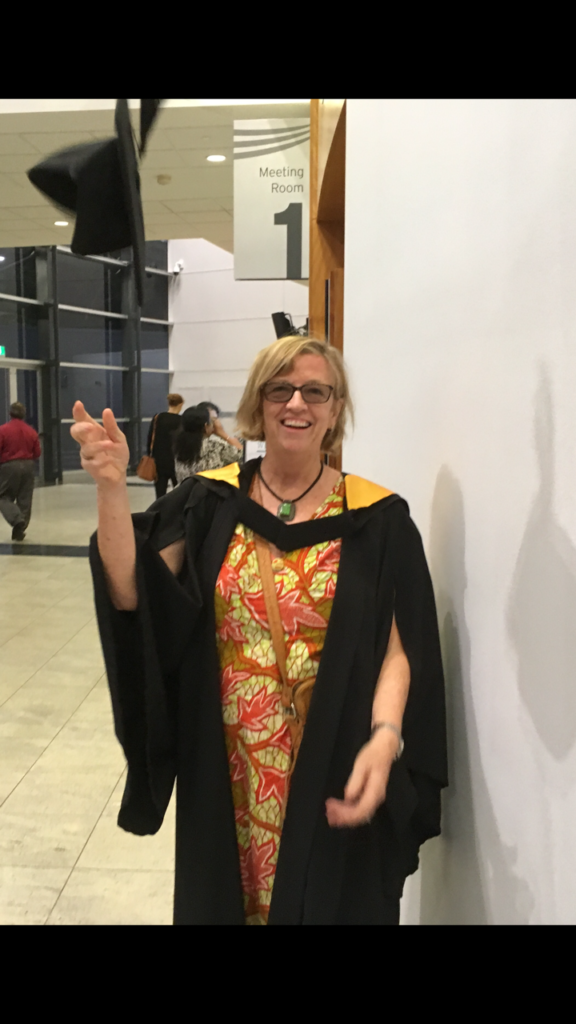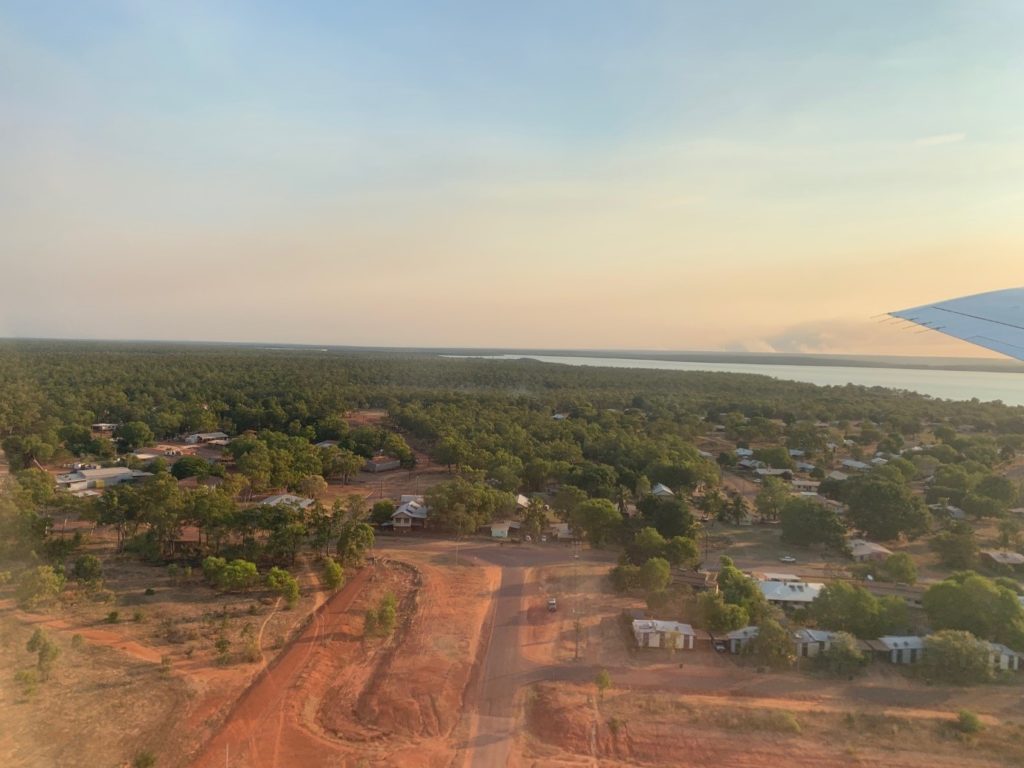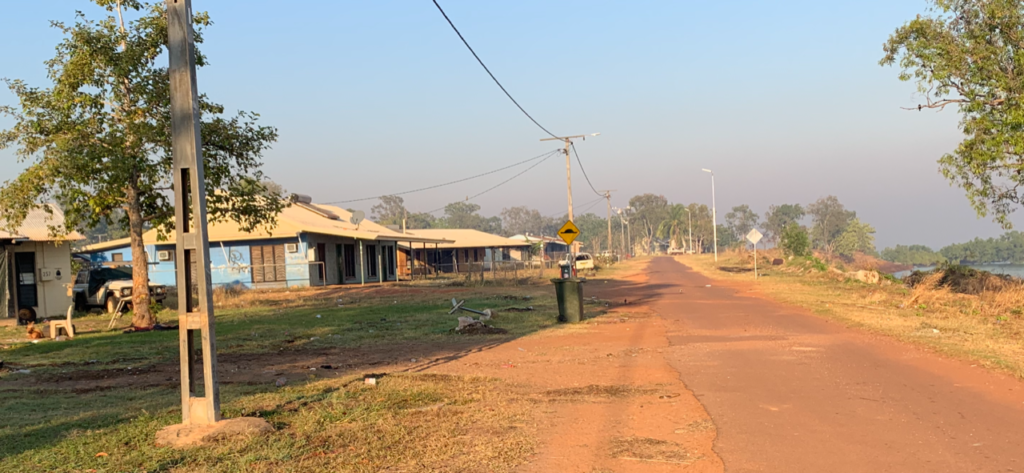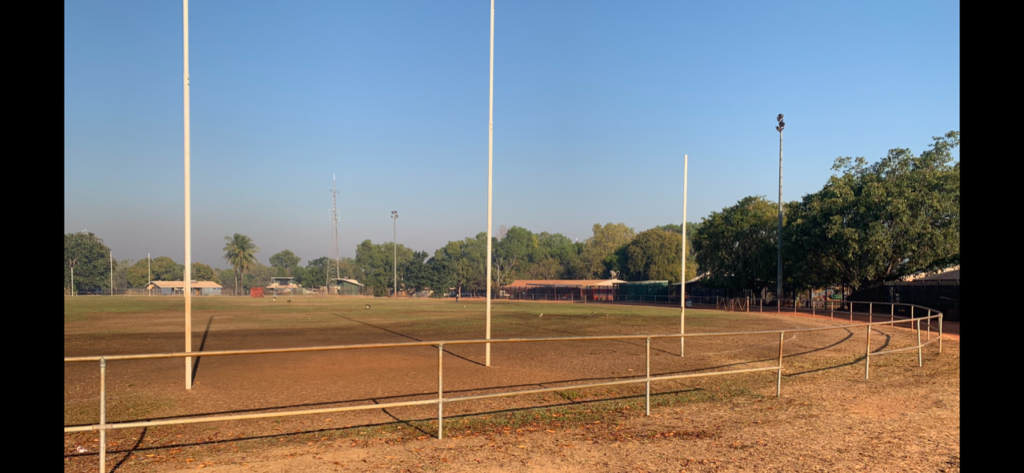This month as we focus on the activity of our Student and Emerging Professionals, I was lucky to be able to interview a very inspirational emerging professional, Natina Demetriou, an Australian Provisional Psychologist, who has recently joined ISSTD. Natina lives and practices in remote communities in the Northern Territory of Australia.
KM: Could you start by telling us a little bit about yourself and what led you to becoming a student again?

ND: When I finished school I was one of those people who had no idea what I wanted to do. So I have spent my life trusting my intuition, and embracing the opportunities that have come along. I would find myself in an incredible job and then I would pursue education so I could do the best job possible. This is how I started one unit of psychology online while living in Katherine, Northern Territory, Australia. I had been working in remote communities as a counsellor, specialising in Narrative Therapy, and then I started working as a Sexual Assault Counsellor with NT Government. This provided an incredible opportunity to work with those who have experienced trauma, both historical and recent. Half of my clients were indigenous, living either in Katherine or very remote communities in the Katherine region (also known as The Top End). I had the opportunity to fly to remote communities and deliver psychological first aid to victims of sexual assault and support remote health clinics staff who were also working closely with this clientele.
When I started to observe clients dissociating in a counselling session, I knew it was time to upgrade my skills. Narrative Therapy practices provided the icing of the cake, but I was missing the main body, so I started a 10 year journey to become a registered psychologist. I had not planned on specialising in trauma counselling, but the majority of my clients have experienced intergenerational trauma. Non-indigenous clients have also experienced childhood trauma and come to places such as Katherine and Darwin to escape their interactions with dysfunctional families.
Mental health problems and comorbidity are highly prevalent, particularly when working with alcohol and drug issues. We have a lot of Stolen Generation problems. International readers who may be unaware of the Stolen Generation can find some information here: https://www.commonground.org.au/learn/the-stolen-generations
Communities throughout the Top End have been severely impacted by colonisation and the displacement and fracturing of families because of Stolen Generation. Families are decimated by drugs and alcohol, severe mental health issues and suicide. We have the grandparents raising the grandkids. Foetal Alcohol Syndrome is a big problem. Approximately 60% of indigenous people in our gaols have Foetal Alcohol Syndrome. It affects their ability to think and problem-solve.
Many of these people also live far from family with no support network. Suicide is a major issue for many young people throughout the Northern Territory. We do not have many mental health services in a small outback town like Katherine, so I had the opportunity to work with high needs client who had very little support. In addition, I come from a trauma background myself, so it’s been especially helpful for understanding my own relationship difficulties and idiosyncrasies.
In the last 10 years I completed my Bachelor of Psychology (Honours) at Charles Darwin University and successfully applied for a two-year internship as a provisional psychologist (In Australia this is an alternative pathway to qualification as a psychologist which provides an intensive period of training, supervision and study for years 5 and 6 of the training). I am currently 6 months from completing my registration requirements. This feels like an amazing accomplishment as I turned 60 in August, and I am now launching into this next decade as a new career psychologist.
KM: Natina, you sound quite casual about completing your qualifications, but I am guessing that was hard to do in such a remote area?

ND: Yes, I did the first three years by distance education, but then I had to move to Darwin for the fourth year. This is over 300 kilometres away. My husband would drive up to see me each weekend! I am also doing my internship based in Darwin.
KM: I think it is very encouraging and inspirational that you did this aged almost 60.
ND: It’s never too late to study or train. What does age matter? We need to catch each other when we say we’re too old. We need to break free of this ageist thing. Ideally, rather than say we are too old we should say ‘I’m in my 60’s what do I do next? Or, in my 70’s, what do I do now? Let’s reduce the limitations we put on ourselves, just because of age!
KM: I love that thinking! Natina, you work in a fairly remote area of the globe. You may indeed be one of the ISSTD’s more remote members. Can you share with our readers a bit about the communities in the Northern Territory where you have lived and worked?
ND: After completing counselling training, I found work in Katherine. The Katherine region, also known as big river country, is almost 337,000 square kilometres (130, 000 square miles). The population of this huge region is 24, 000 people, 60% of whom identify as Indigenous and includes 27 indigenous language groups.
The township of Katherine, located on the Katherine River, has always been an important meeting place for the clans in this area. It marks the convergence of three main Aboriginal language groups – Jawoyn, Wardaman and Mialli. The Aboriginal people of Katherine live in different communities located in and around Katherine. The largest of these are Mialli Brumby (also known as Kalano), which is located along the northern side of the Katherine River, and Rockhole, which is fifteen kilometres from the town centre. The other living areas are Binjari, Walpiri, and Gorge Camp (Jodetlukop). Many Aboriginal people also live within the Katherine township itself and this has a population of approximately 8,000 people, including a large Defence base. There is also a large Philippino community in Katherine. The broader regional population includes those living and working on remote cattle stations. It’s a wonderful multicultural society that prides itself on its diversity and acceptance of people from around the world.
Working in such a remote area involves opportunities to drive long distances on dirt roads or to fly to remote communities such as Borrolloola, Kalkarindgi, and Wadeye to support teachers, health workers, students, and families. Flying is a big part of life as the Wet season makes roads impassable and the 5 major rivers in this region often flood during the Wet. This means that work is always surprising, challenging and very rewarding.

KM: It’s widely agreed that the Northern Territory is an area with much inter-generational trauma, but is there much knowledge or talk about dissociative disorders?
ND: Dissociative disorders are not widely discussed. This issue (dissociation) may be further complicated by working with indigenous people who are severely impacted by drug and alcohol addiction. It is well known that most of our Aboriginal and Torres Strait Islanders would experience complex and intergenerational trauma. Many people are from Stolen Generation and grew up in missions, far removed from their families and communities. A lucky few had one of their parents working in the missions, but the majority of people spent many years trying to reconnect to their families. Many people experienced severe abuse and neglect while living in the missions or in foster homes and were far removed from their own cultural practices. Childhood sexual abuse and domestic violence is common place.
I think that the level of dissociation amongst the indigenous population is less understood, and complicated by other cultural aspects. For example, Aboriginal clients often speak of talking with ancestors and being visited by spirits. They also visit Spirit doctors and warn of talking to visiting evil spirits in the community. Although this is not related to dissociation, it is indicative of the level of complexity that must be considered when working in indigenous communities.
We often receive training for providing trauma informed care, but I never received training or information regarding dissociation, even while working in the area of sexual assault. My first dissociative client was a terrifying experience for me. I really didn’t understand what was happening.
Up here, there are not many training opportunities and we have to travel to big cities such as Sydney and Melbourne to increase our knowledge. This is a huge expense and takes up a great deal of our training development budget, so our knowledge and services can be very limited. My own knowledge regarding dissociation has arisen since training in EMDR, and this involved going to Sydney and Melbourne to complete training requirements. It is a huge investment and expense and explains why our knowledge base is so limited.
KM: Even though I did my trauma training in a city I also did not get training on dissociative disorders either. Given this is not the most widely-known field in Australian psychology, what led you to joining ISSTD?
ND: As part of my internship, my supervisor encouraged me to pursue EMDR training. At the time, I had some very complex client cases with the symptoms of Borderline Personality Disorder. One particularly committed client struggled to talk due to silencing of her child parts. During my EMDR training, you kindly told me about ISSTD and the fantastic resources that are available.

KM: I hadn’t realised I was the one to convince you to join! I just remember how impressed our group was that you had travelled 4, 000 kilometres to do a training course. I was thinking that ISSTD online courses and webinars would be helpful for you. How have you found the experience of ISSTD so far?
ND: The networking with ISSTD and EMDRAA has been very supportive and provided excellent learning opportunities. I have been able to ask questions and the replies are very timely and informative. In addition, there are some excellent resources including past research, current articles, videos and guidelines for best practices. The network appears to have very active and engaged members who are happy to assist other professionals. It’s great to not feel alone even though it’s such a remote part of the world.
KM: When you finish your training, what are your next plans?
ND: I shall continue down the trauma trail. I love the creativity of working with Ego State Therapy and EMDR. I am passionate about understanding the effects of attachment trauma and benefits of experiencing emotionally corrective relationships during therapy. I relish building rapport and connection with clients over time to establish secure attachment experiences and rewire neural networks. I think it’s helping my own neural networks immensely.
I still have a great deal to learn and the Territory offers enormous opportunities for working in this field. I have no plans for retirement except cutting back to part-time when I’m in my 70’s. We also love the weather and lifestyle of the Territory including the care of our 5 acre block on the Katherine River. I now live and work in Darwin, but continue to travel across the Top End for service delivery and visit Katherine on a regular basis. In the Territory, you never know what might happen next, so life is full of surprises and amazing opportunities in terms of our careers and lifestyle.

